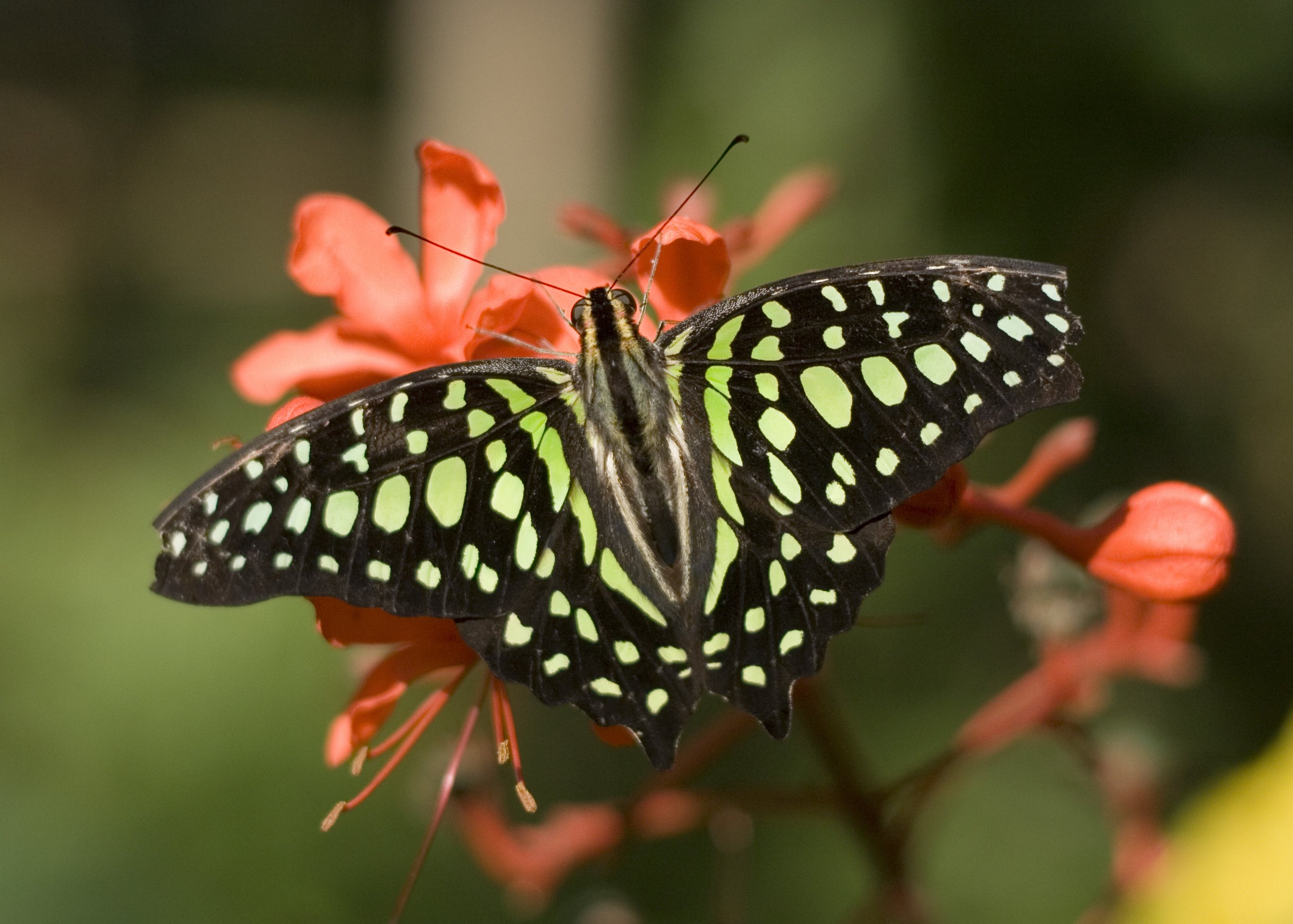
Graphium agamemnon (Graphium agamemnon)
Phylum — arthropoda
Class — insecta
Order — lepidoptera
Family — papilionidae
Genus – graphium
Appearance
The adult butterflies have a wing span around 8 cms. The upper surfaces of the wings are black with rows of green spots, although in dead specimens, the green fades to yellow. The underside is brown with fewer spots, some of which are green, but others are various colors including black, red, white and blue.
Habitat
Graphium agamemnon is found in Southeast Asia, India, Sri Lanka and Australia.
Behavior
Strong and restless fliers, they are very active butterflies and flutter their wings constantly even when at flowers. They are seldom seen drinking from damp patches. The females are more likely caught when looking for food plants or laying eggs.
These butterflies are active throughout the year but their abundance depends upon the local monsoon and availability of the larval host plants. The butterflies generally fly among the tree-tops but descend to ground level in search of flowers or host plants. Because of their relatively fast life cycle (just over one month from egg to adult), butterflies are multivoltine and may produce up to seven or eight broods per year.
Diet
The food plant of the caterpillars is Polyalthia longifolia. Males like to feed on Lantana, Ixora and Poinsettia nectar.
Lifecycle
This species can take from 33–36 days from egg to adult. The species is multivoltine with at least seven or eight broods in a year.
The eggs are pale yellow and are laid singly on the underside of young leaves, and hatch after three or four days.
Young larvae are dark yellowish green with a pale yellow band in the middle of the abdomen. From the head, which is moderately large, the body increases in thickness rapidly to the 4th or 5th segment and then tapers gradually down to the tail. It has four pairs of spines. The color is at first smoky black, but at the last molt becomes a light clear green faintly marked with lines of a darker shade. The fully grown larva is green, fusiform and having small black spots. It has a pair of osmeterium and black spines on each thoracic segment, the third pair being orange yellow. A fourth pair is situated on the last segment. The spines are usually black with orange rings at the base of each spine. The caterpillars undergo five instars over a period of 15–16 days.
The pupae are green or brownish. They are found attached on the underside of leaves; sometimes on the upperside, and are held in place with a body girdle. The pupal stage lasts for 13–14 days.
Adult butterflies of this species live for 6 days on average.
 Russian
Russian
 English
English























